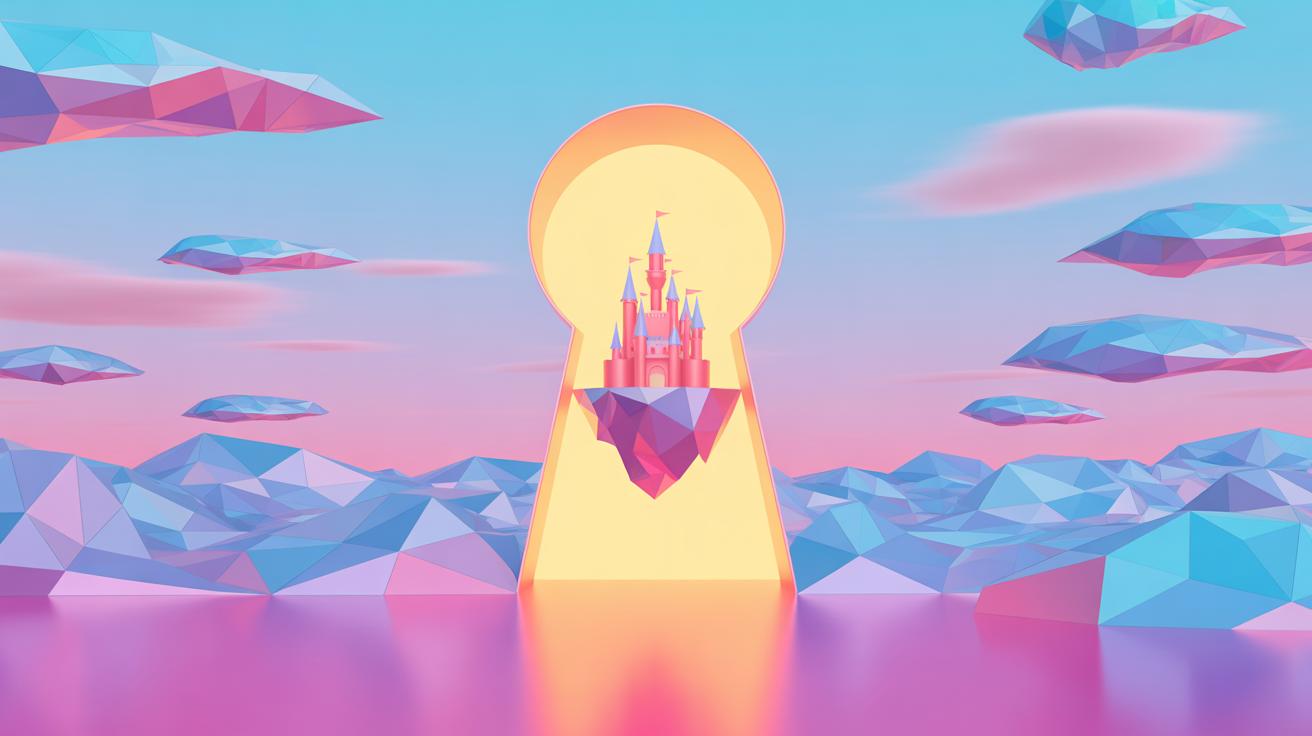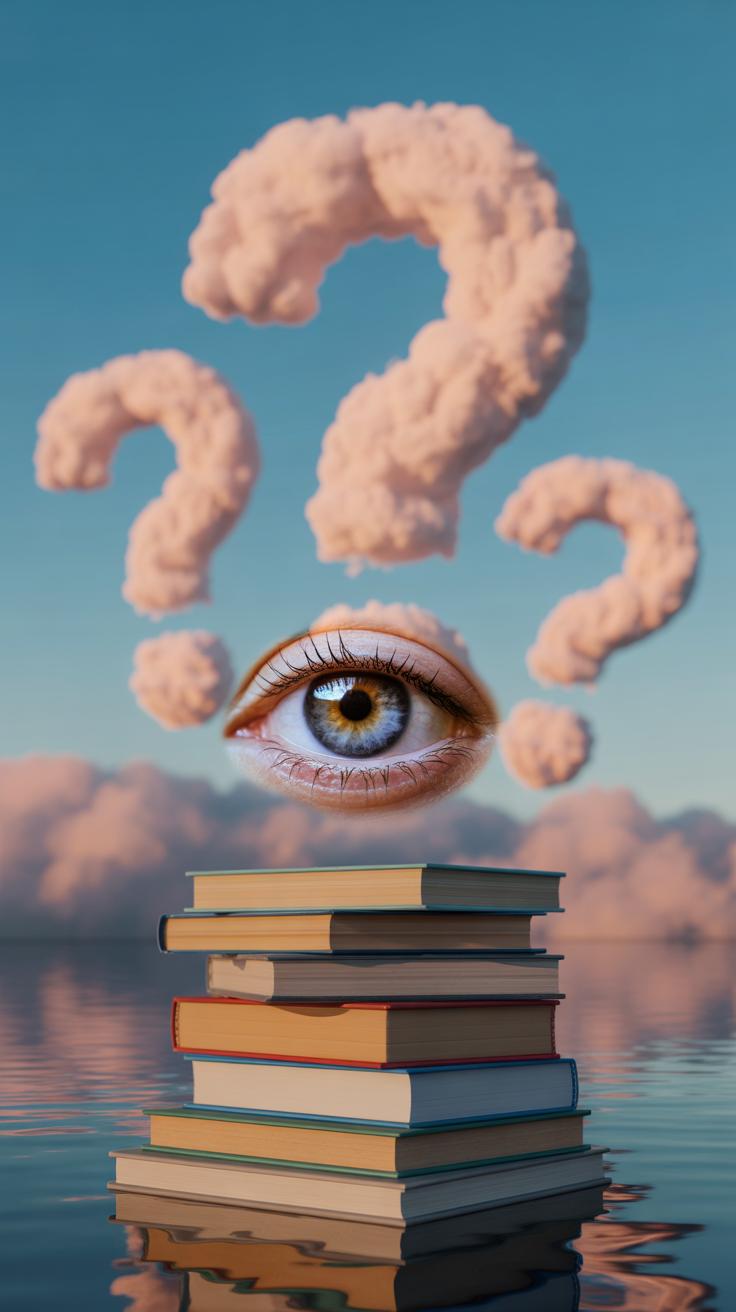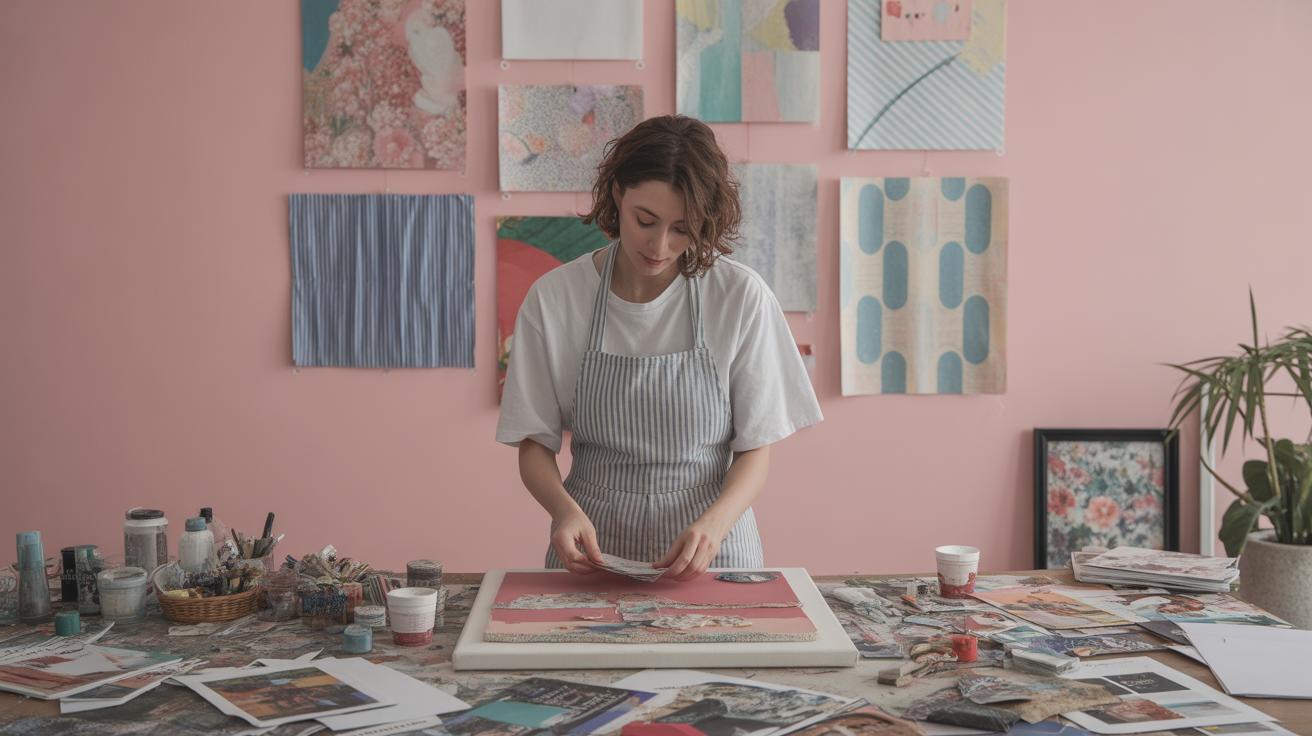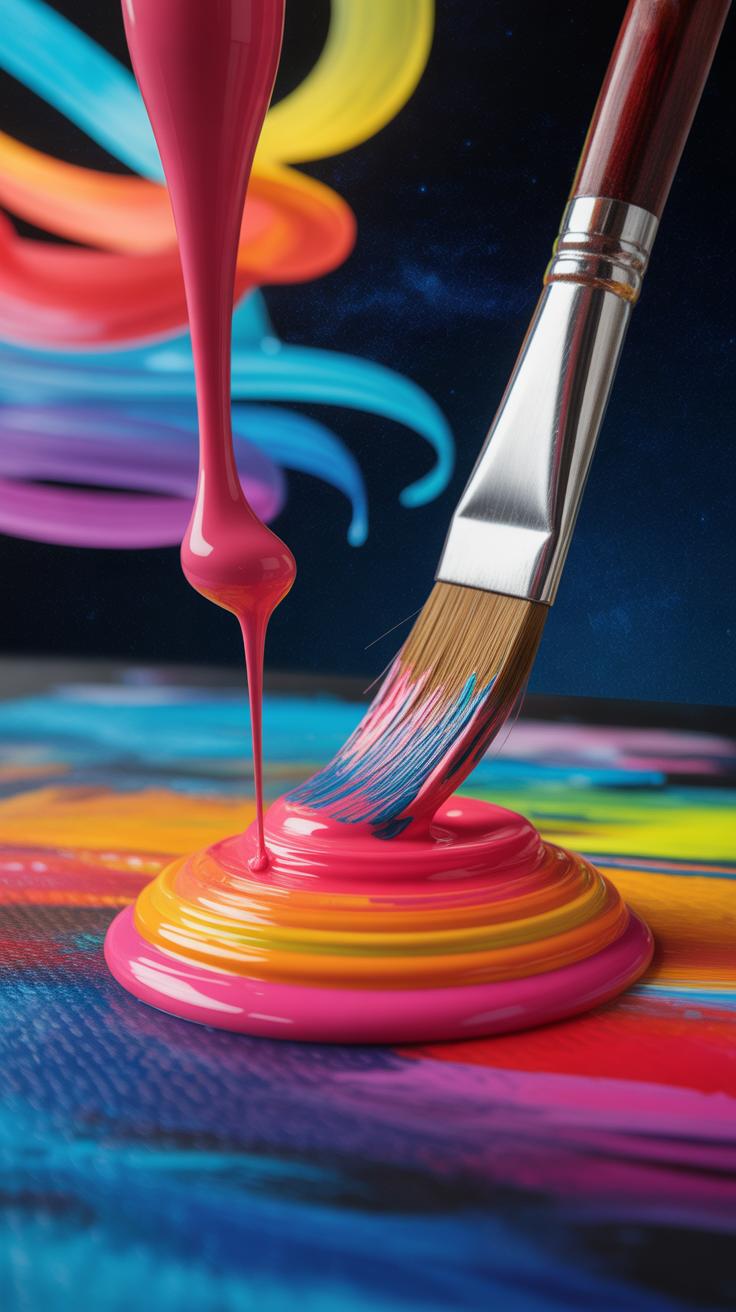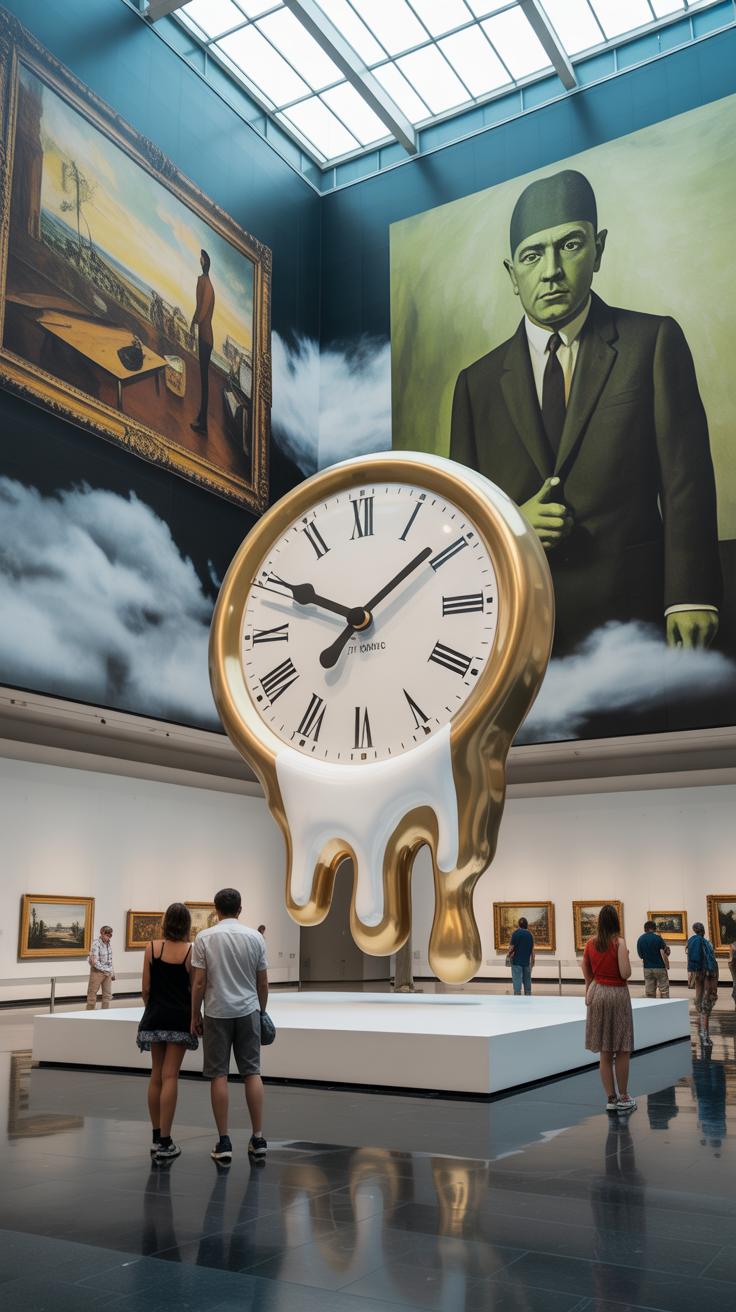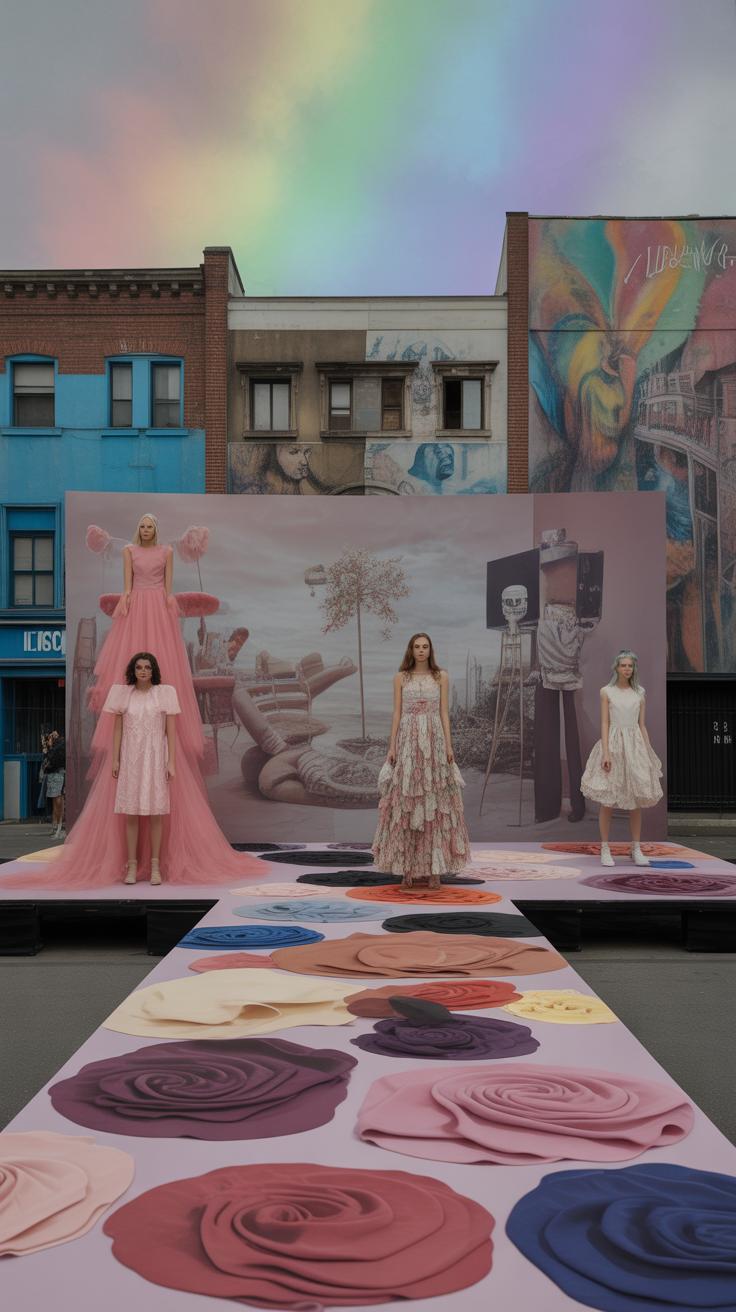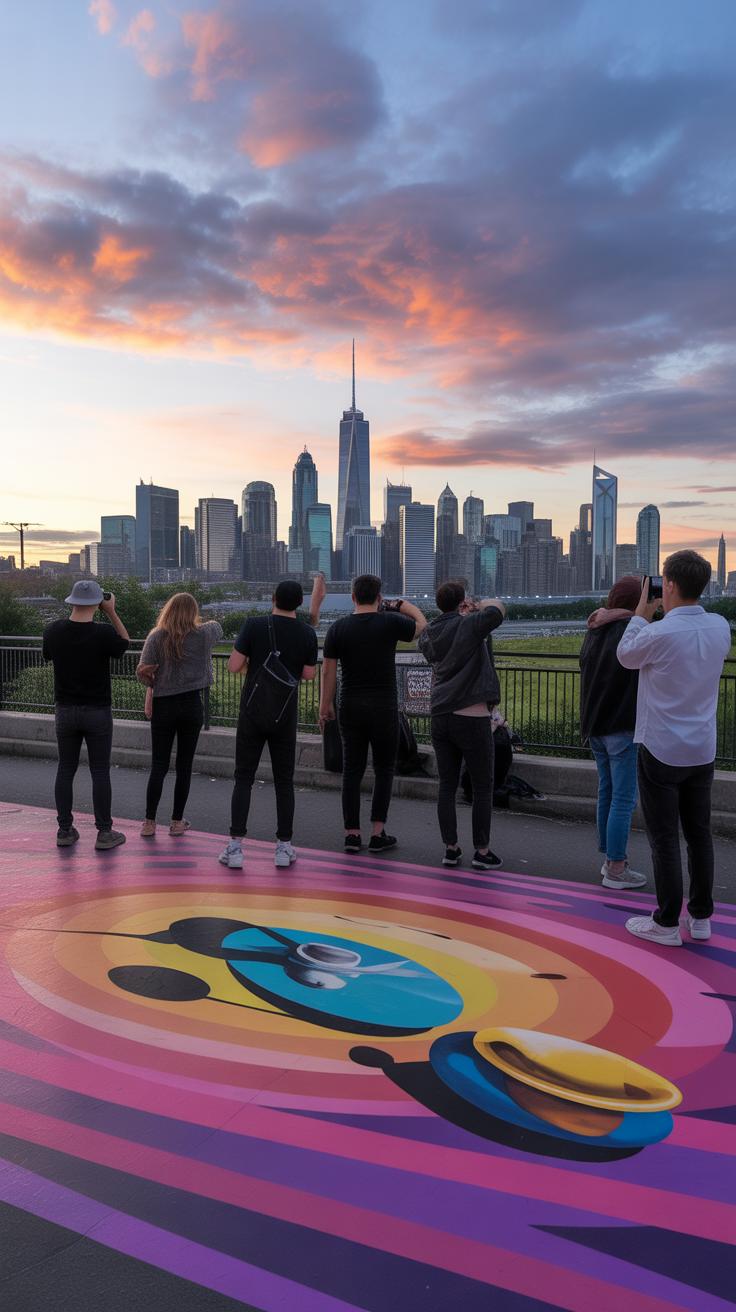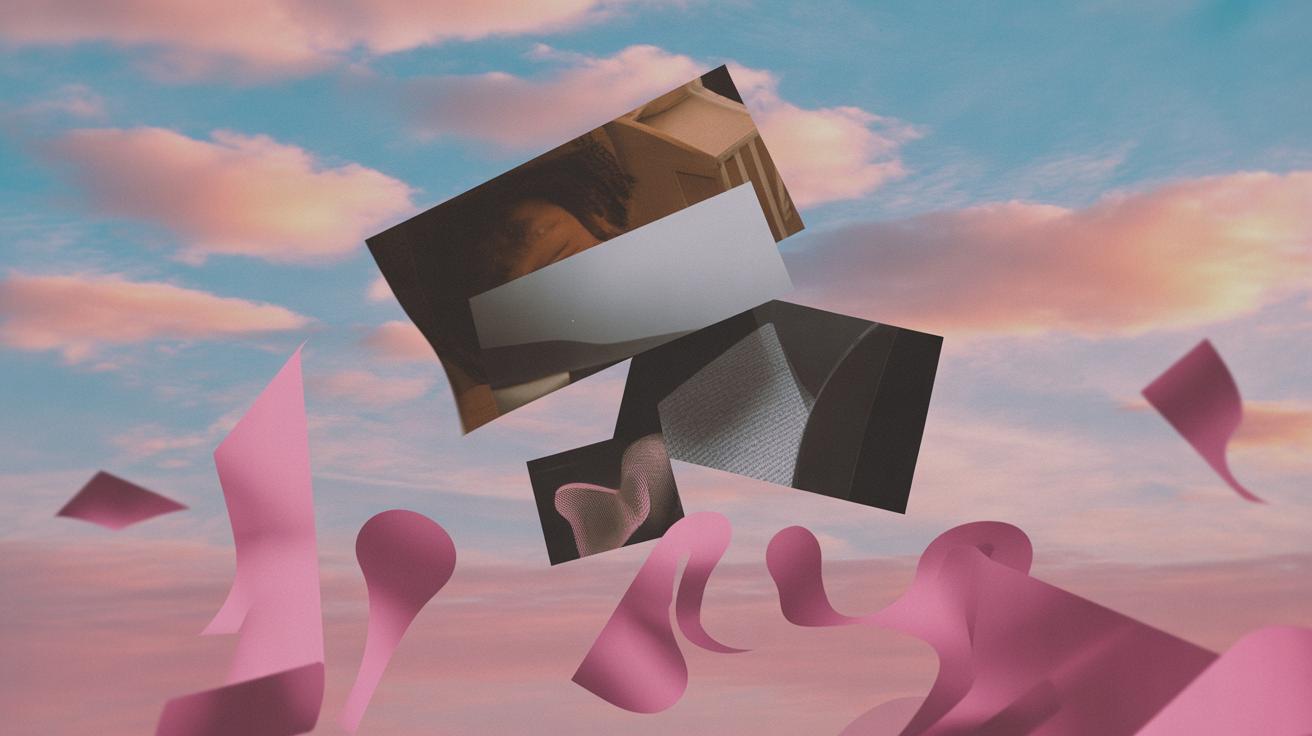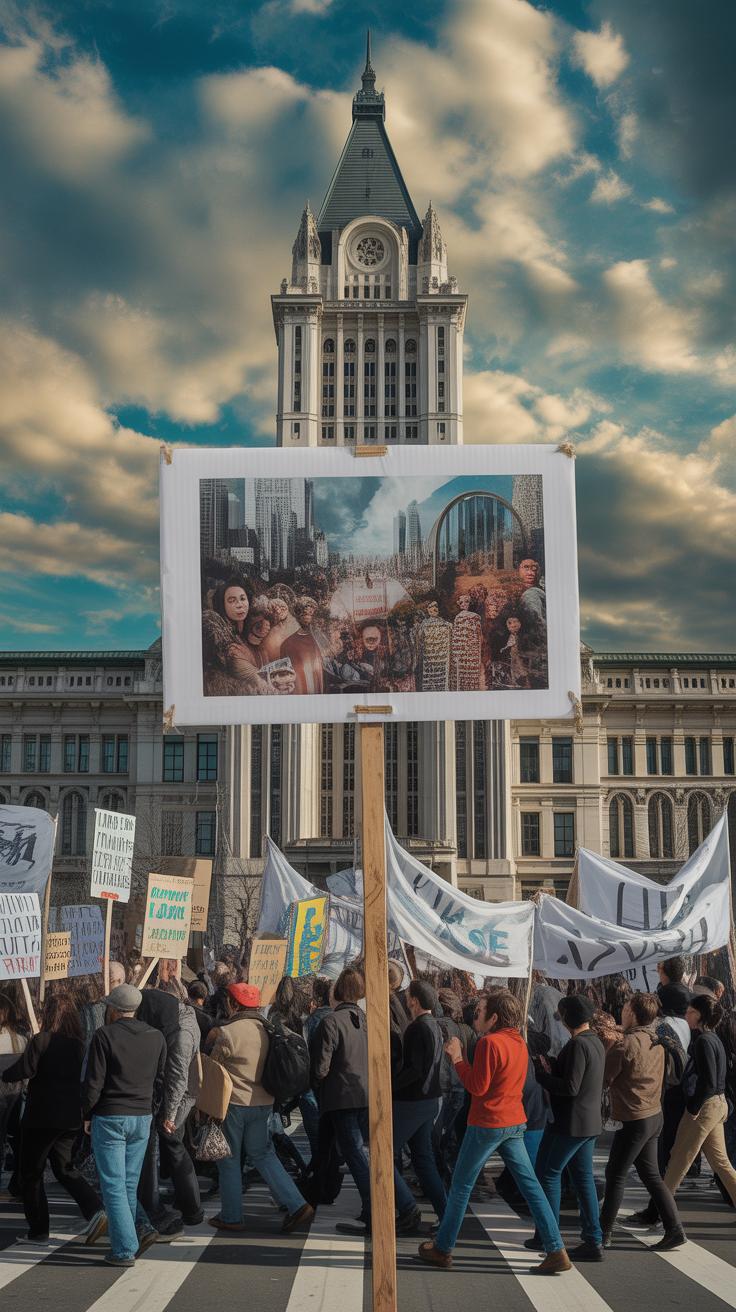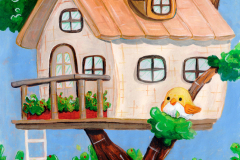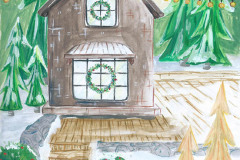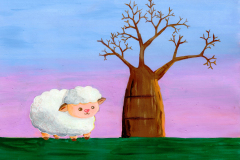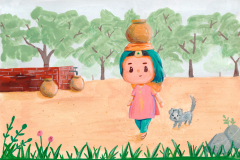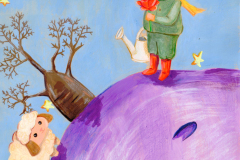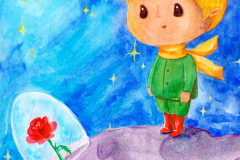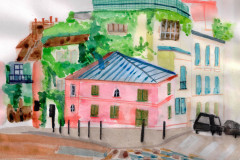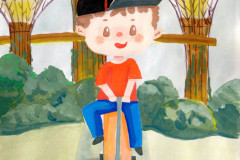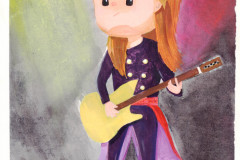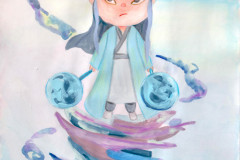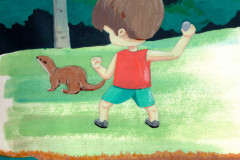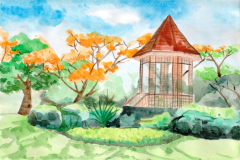Introduction
Surrealism painting stands out as a unique art style that emerged after World War I. It is not just about creating pictures but about expressing dreams and the unconscious mind. This style shows scenes that might seem strange or illogical but hold deep meaning and creativity. Surrealism mixes reality with imagination in unexpected ways.
This article will help you understand why surrealism still fascinates many artists and dreamers today. We will explore its beginnings, key ideas, and impact on art and culture. If you want to know what makes this movement so special and why it still speaks to many people’s creative hearts, keep reading.
The Origins of Surrealism
How Surrealism Started
Surrealism emerged in the early 1920s, just after the devastation of World War I. The war’s chaos pushed many artists and writers to question reality itself. They were haunted by the violence and absurdity they’d witnessed, what seemed to be the collapse of reason. This atmosphere stirred a deep need to explore new ways of thinking and creating.
Surrealism grew out of the earlier Dada movement, which was essentially a protest against the logic and norms that had led to the war. Dada was playful, chaotic, and deliberately irrational, but surrealism wanted to go further, reaching beyond nonsense to tap into the deeper workings of the mind. Paris became the natural hub for this shift. It attracted an international community eager for fresh artistic expressions and was already brimming with avant-garde ideas.
André Breton and the Surrealist Manifesto
André Breton played a decisive role in shaping surrealism. Before becoming an artist and writer, Breton studied psychiatry and had a keen interest in psychoanalysis, especially the ideas of Freud. His understanding of the mind’s unconscious offered a foundation for surrealism’s exploration of dreams and hidden desires.
Breton’s 1924 Surrealist Manifesto set the movement’s course. He described surrealism as “psychic automatism” — a way to express thoughts without the interference of reason or morals. It wasn’t just an art style; Breton saw surrealism as a philosophy blending dream and reality, pushing people to embrace the unpredictable and the irrational in life and creativity. This manifesto helped define surrealism’s goals and gathered like-minded artists around a common purpose.
The Philosophy Behind Surrealism
Dreams and the Unconscious Mind
Surrealism dives deep into the unconscious—those hidden corners of the mind where logic often falls apart. Dreams are not just random images for surrealists; they’re a doorway to truths we don’t fully grasp while awake. The movement leans on Freud’s ideas, exploring how the unconscious shapes thoughts and feelings.
Surrealists try to capture this raw mental flow. They reject strict reason and traditional rules, instead letting the mind roam free. By tapping into dreams and unconscious impulses, surrealism creates artwork that doesn’t follow linear narratives. The results can feel puzzling, even unsettling, but that’s part of the aim: to shake you out of normal perception.
At times, you might wonder if surrealists valued the subconscious itself, or just the surprising images it produced. Maybe both. This mix of unpredictability and hidden meaning is what keeps surrealism so compelling.
The Goal of Surrealism
The core ambition behind surrealism was to build what André Breton called a ‘super-reality’—a world beyond everyday logic. It’s not just fantasy. Instead, surrealism stitches together reality and the dream world to create something entirely new, something that might show a different side of existence.
Think of this super-reality as a surprise every time you look at a painting. It questions how you see what’s real and what’s imagined. The unexpected juxtapositions—like melting clocks or floating objects—reflect this ambition. It wants you, the viewer, to experience a fresh way of looking at life, unsettling yet oddly familiar.
But isn’t there a tension here? Can such a super-reality ever be stable, or is it always shifting like a dream itself? Surrealism seems to accept the messiness. Its strength is in that mix, the uneasy space where sense and nonsense coexist. That’s why it still calls out to artists and dreamers today—you’re invited to step into a world where your mind’s eye can roam without limits.
Techniques Used in Surrealist Painting
Surrealists found ways to let their minds wander—and then gave those wanderings a visible form. One of the core methods was automatism, where artists deliberately avoided conscious control. Rather than plan every brushstroke, they allowed the hand to move freely, as if guided by the subconscious. This spontaneity often produced unexpected shapes and forms. You might think it sounds chaotic, but there’s a strange order in that randomness, a glimpse into hidden thoughts spilling out without filters.
Then there’s the use of surprising, out-of-place images. Surrealists liked to place ordinary objects side by side in bizarre combinations, creating scenes that seem impossible yet feel oddly familiar. Imagine a clock melting over a branch or a face made up of everyday items. These juxtapositions invite you to question what you’re seeing and why. It’s not always clear what the painting means—sometimes not even to the artist. But that confusion is part of the point.
Dreamlike imagery plays a key role too. Clouds might float indoors, or bodies can stretch beyond natural limits. These settings don’t obey physical laws, giving viewers a taste of the absurdity and mystery residing in our minds. Techniques like sharp detail alongside blurred or amorphous areas emphasize this sense of being caught between reality and dream.
The way Surrealists worked—with automatism, unexpected scenes, and vivid imagery—keeps their paintings alive and open to new interpretations. You can look at the same piece years apart and still uncover something you hadn’t noticed before. It’s almost as if the canvas retains some secret, slowly revealing it to anyone willing to look a little closer.
Famous Surrealist Artists and Their Works
Surrealist painting gained much of its power through a few remarkable artists who seemed to unlock the mysteries of the unconscious with brush and canvas. Salvador Dalí, René Magritte, and Max Ernst stand out as some of the most notable figures, each bringing something uniquely puzzling and fascinating.
Salvador Dalí’s Iconic Paintings
Dalí’s work often feels like stepping into a dream you can almost remember but can’t quite grasp. Take “The Persistence of Memory,” for example—those melting clocks draped over strange landscapes unsettle your sense of time, making you question reality. There’s a precision in his detail that contrasts with the wildness of his ideas, which might explain why his paintings stick with you long after you look away.
Other works like “The Elephants” reveal his fixation on unexpected juxtapositions—a spindly-legged elephant carrying impossible burdens, almost like a symbol we struggle to understand. His paintings tease your brain, inviting you to find meaning or to simply get lost in the bizarre. That tension between clarity and confusion is what keeps people coming back.
René Magritte’s Thought-Provoking Art
Magritte’s approach is quieter but no less strange. He borrowed everyday objects—like apple, pipes, and bowler hats—and placed them in odd or impossible settings. His “The Treachery of Images,” showing a pipe with the caption “This is not a pipe,” jolts viewers into a deeper consideration of representation and reality. It’s simple, but it unsettles you later, you know, making you rethink what you took for granted.
In paintings like “The Son of Man,” Magritte hides faces behind floating apples, suggesting the limits of identity and perception. His style feels like a puzzle you might never fully solve, encouraging you to look longer and question what you see. There’s something almost teasing in how he toys with things familiar, then strips away their obvious meanings.
Surrealisms Impact Beyond Painting
Surrealism didn’t stay confined to canvases. It spilled over, touching many other creative fields, shifting how stories were told and images captured. In literature, writers like André Breton didn’t just write weird stories; they tried to unlock the unconscious mind, tapping into dreams and fantasies that feel both strange and familiar at once.
Filmmakers took surrealism and used it to twist reality on screen. Think of Luis Buñuel’s “Un Chien Andalou,” where time skips and bizarre images jolt you into a different way of seeing. These films don’t always follow clear plots—the visuals and mood matter more than logic, making you question what’s real or imagined.
Photography also felt surreal’s pull. Some artists began crafting photos that seem like snapshots from dreams or nightmares—unexpected juxtapositions, eerie shadows, and fragmented realities. It’s like the camera captured parts of the mind’s hidden corners.
On stage, theatre productions borrowed surrealist elements to create performances that defy normal expectations. Unusual props, strange dialogues, and abstract movements introduce a dreamlike atmosphere. You might leave the theatre feeling unsettled, or oddly inspired, unsure of what you experienced but knowing it stirred something inside.
- Surrealism blurred lines between reality and fantasy in writing and cinema.
- Photographers embraced unexpected visuals to suggest deeper, subconscious truths.
- Theatre adopted dreamlike, unpredictable elements to challenge audiences.
When you explore these areas, you see how surrealism’s spirit lives beyond paint—continuously shaping how we express the unexplainable. It’s almost like surrealism invites you to pause and wonder: what truths hide in the strange and the unreal?
Why Surrealism Continues to Inspire Today
Freedom of Expression
Surrealism opens doors that most styles keep closed. It doesn’t ask you to follow logic or respect traditional rules. That freedom lets artists give shape to feelings and thoughts that often resist clear explanation. Sometimes that’s messy, sometimes it’s chaotic—yet it feels honest. You might find images or scenes that don’t make sense on paper but somehow capture something deeper or rawer.
It’s interesting how that lack of rules can actually be grounding for artists. You don’t have to worry if something looks “right” or “real.” Instead, you can just let whatever’s in your mind come out, unfiltered. I think this kind of freedom is why many keep returning to surrealism even now—especially when the world feels so constrained in other ways.
Connecting With Your Imagination
There is something about surrealism that feels like stepping inside your own head. It invites you to explore dreams, fears, or fragments of memory, none of which usually fit neatly into everyday conversation. When you look at surreal works, it’s almost like peering through a window into another mind—maybe your own, maybe someone else’s.
This exploration isn’t limited to artists either. Dreamers and curious minds find in surrealism a way to reconnect with parts of themselves they don’t often access. Questions pop up: What am I really thinking? What does this strange image mean to me? Surrealism pushes you into a place that’s sometimes uncomfortable and sometimes thrilling, but never dull. And in an age crowded with noise and distraction, that pause to reflect internally feels… well, rare.
How You Can Explore Surrealism in Your Art
Surrealism invites you to dive into the strange and unexpected corners of your mind. One of the most direct ways to tap into that is by paying attention to your dreams. You might want to keep a notebook by your bed and jot down images or feelings the moment you wake up. Sometimes, fragments of dreams are elusive, but even small details—a color, a shape, a mood—can become the foundation of a painting or drawing.
Try not to judge or edit these ideas too much at first. Let them flow freely, even if they seem nonsensical or disconnected. That’s often where the magic lies.
Using Dream Imagery
Think of your dreams as raw material. You could translate a bizarre scene, a strange character, or an impossible landscape into visual form. What happens if you exaggerate certain parts? Or isolate a single object that felt significant? Play with scale and perspective, too. Sometimes, just mixing elements from different dreams can spark something unexpected.
For example, I once painted a door floating above a desert because I remembered that image from an unsettling dream. It wasn’t meant to make sense, but people found it oddly compelling—maybe because it hints at unknown possibilities.
Experimenting With Techniques
Surrealism is about breaking free from control, so techniques like automatism can help. Sit with pen or brush and let your hand move without consciously directing it. See what forms emerge. It can be messy or strange, but that unconscious flow often reveals surprising ideas.
Collage is another useful approach. Try combining photos, magazine cutouts, or painted elements that don’t usually belong together. Mixing unrelated objects can ignite a new narrative or mood. Don’t hesitate to overlap or distort them—the goal isn’t perfection.
Lastly, consider blending different materials or objects in your work. I once glued bits of old keys, feathers, and torn paper onto a canvas—things that didn’t necessarily connect but created a strange harmony. It’s about embracing the unexpected and trusting your instincts, even if you aren’t quite sure where you’re headed.
Have you tried letting go and simply seeing what surfaces when you start without a fixed plan? That’s the heart of surrealism. There’s more freedom there than you might expect, and it’s worth exploring. What surprising images or feelings might you uncover if you just let your imagination roam?
Surrealism and Its Role in Culture and Politics
Surrealism as Revolution
Surrealists saw their work as more than just art—they viewed it as a way to shake up society. Their paintings weren’t simply about strange images or dreamlike scenes. They believed these images could disrupt the ordinary ways people think, question established norms, and reveal hidden truths.
It’s tricky, though. The movement strove to unsettle comfortable ideas, aiming for change beyond galleries and museums. The act of creating surrealist art often felt like a rebellion, a challenge to convention. Yet, the question remains: how much did this artistic rebellion actually influence broader social change?
You might feel the surrealists were pushing boundaries not just for art’s sake but with a strong desire for transformation—a sort of soft revolution through imagination.
Political Connections
Surrealism’s roots intertwined with political currents, especially on the left. Many of its main figures had sympathies with communist and anarchist ideologies. This wasn’t accidental; they were searching for systems that matched their vision of freedom from the constraints of rationalism and capitalism.
Still, the connection wasn’t straightforward. Surrealists often clashed with political parties or movements because their ideas were too fluid, too contradictory. For example, André Breton, the movement’s founder, was expelled from the French Communist Party, partly because surrealism’s emphasis on the unconscious didn’t fit neatly into political dogma.
This tension—between radical politics and the surrealists’ own explorations—shaped the movement’s development. It grew as both an artistic and a political act, even if it rarely settled into one clear ideology. So, when you look at surrealism, you’re seeing a space where art and politics constantly push and pull against each other.
The Future of Surrealism Painting
Surrealism isn’t stuck in the past—it keeps evolving, sometimes in ways we don’t expect. Artists today are exploring digital tools, which open doors surrealists of the early 20th century couldn’t have imagined. Digital painting, for instance, allows rapid experimentation with form and color, letting creators layer images or distort reality in real time. Virtual reality takes this even further, creating immersive worlds where viewers don’t just observe but enter surreal landscapes.
You might wonder how these new tools affect the essence of surrealism. Does the use of technology dilute its original spirit? Some would say yes, but others, including myself, find that these tools can actually deepen surrealism’s power by making dreamlike visions more vivid and interactive.
At the same time, young artists bring fresh voices and diverse backgrounds to surrealism. Their work often questions what “surreal” means today. For example, some mix personal identity, social issues, or digital culture into their paintings. This fresh mix keeps the tradition from feeling stale or purely nostalgic.
What’s clear is that surrealism’s future isn’t fixed. New mediums and perspectives will challenge old ideas, but maybe that’s exactly what surrealism needs to stay alive and surprising.
Conclusions
Surrealism painting offers a way to see the world differently. It shows how imagination and dreams can influence real life. Many artists find freedom in this style because it allows them to express thoughts beyond logic and reason.
For dreamers and creators like you, surrealism remains inspiring. It encourages exploring your inner mind and sharing your unique visions. By understanding its roots and impact, you gain new tools to unlock creativity and embrace the unexpected in your artistic journey.



